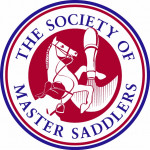Posted: 31st July 2021 | Back to news feed

Twice president of The Society Master Saddlers, Lecturer / Assessor on Saddle fitting courses and Master Saddler Laurence Pearman provides advice on checking your saddle for safety.

Question
What areas of my saddle should I check for wear or damage? Are there any areas that are more susceptible to wear?
Answer
When checking for areas of wear and damage on a saddle, first to be considered are the girth straps as this is a safety issue.
Look for cracking in the leather where it is held by the buckle as this can lead to the girth straps breaking.
On occasions girth straps can stretch and the holes will then become un-level so this is another key area to keep checking.
If the holes stretch there is the possibility that one can split down to the next hole and the straps should be repaired before this happens.
As part of your regular checks also look for the webbing that holds the straps weakening and breaking.
Another issue that can arise are stirrup leathers becoming unstitched and then breaking or like the girth straps, the holes stretching and becoming dangerous.
On the saddle it is also important to ensure that the stirrup bars do not become loose with exceptional wear and tear over years.
Other areas for damage are the cantle and I would suggest always keeping a leather cantle guard on to protect it if you have one, or keep its cover on as much as possible to protect it, and never lean the saddle against a wall or similar on to the cantle.
The saddle seat is another area that can gradually become damaged over time, especially the stitching along the seams so remember to check around there.
The stitching at the bottom of the kneepads on the flaps is a similar area that may need maintenance.
If you have an adjustable saddle with screws it is important to put in place a system for checking screw tightness on a regular basis as it is possible for them to loosen over time.
Last but not least the saddle flaps can wear and mark especially if the zips on boots or half chaps come into contact with them.
The best routine is to have a quick check of your saddle when cleaning and get into the habit of having any damage repaired as soon as you notice any significant wear.
For more information visit www.mastersaddlers.co.uk or contact The Society of Master Saddlers on 01449 711642.
The Equestrian Index newsfeed is compiled from articles submitted by advertising members and expresses the opinions of those members. Watsons Directories Ltd shall not be held liable for any inaccuracies or mis-statements therein.